Description
Following in the footsteps of its popular predecessor, the second edition of Emergency Management: The American Experience 1900–2010 provides the background needed to understand the key political and policy underpinnings of emergency management, exploring how major “focusing events” have shaped the development of emergency management. It builds on the original theoretical framework and chronological approach, but improves on the first edition by adding fresh information on older events such as Hurricane Katrina as well as a new chapter covering the BP oil spill in 2010 and the unprecedented characteristics of the disaster response to it. The final chapter offers an insightful discussion of the public administration concepts that constitute the larger context for consideration of emergency management in the United States for more than a century.Some praise for the new edition of this award-winning book:The first edition of this book filled a serious gap in the literature by providing historical context for present-day emergency management. This edition goes further to flesh out that context, detailing the political and practical underpinnings of emergency management organization and practice. —Professor William L. Waugh Jr., Department of Public Administration & Urban Studies, Andrew Young School of Policy Studies, Georgia State University… a must-read for both undergraduate and graduate students who want to learn from our past and join a growing professional field committed to enhancing community resilience and sustainability.— John C. Pine, director, Research Institute for Energy, Environment and Economics, Appalachian State University Read more
Review The first edition of this book filled a serious gap in the literature by providing historical context for present-day emergency management. This edition goes further to flesh out that context, detailing the political and practical underpinnings of emergency management organization and practice. In a time in which few officials, journalists, members of the public, and even emergency management practitioners understand the lessons of the past, this reminder is all the more important. … should be required reading for every student of emergency management and every official responsible for addressing risks to community and nation. The need for effective management of the nation’s hazards, natural and unnatural, has never been greater.―William L. Waugh Jr., professor, Department of Public Administration & Urban Studies, Andrew Young School of Policy Studies, Georgia State UniversityRubin guides a team of researchers that give us the most comprehensive account of emergency management as it has developed over the past century. … a must-read for both undergraduate and graduate students who want to learn from our past and join a growing professional field committed to enhancing community resilience and sustainability.― John C. Pine, director, Research Institute for Energy, Environment and Economics, Appalachian State University –This text refers to an alternate kindle_edition edition. About the Author Claire B. Rubin (Book Editor & Chapter 1) is president of Claire B. Rubin & Associates, LLC (clairerubin.com), a small business specializing in disaster research and consulting, located in Arlington, Virginia, and is also CEO of the Disaster Bookstore (disasterbookstore.com). She has been affiliated with the Institute for Crisis, Disaster and Risk Management at The George Washington University in Washington, D.C., since 1998. She was the cofounder of the Journal of Homeland Security and Emergency Management and served as managing editor for six years. With thirty-four years of experience as a researcher, practitioner, and academic in the field of emergency management, she has authored more than eighty publications and delivered numerous lectures and presentations on emergency management and homeland security topics. Ms Rubin holds a BS from Simmons College and an MA from Boston University.Keith Bea (Chapter 4) retired in 2011 from his duties as a specialist in American national government in the Government and Finance Division of the Congressional Research Service (CRS), having spent almost four decades in federal service. In addition to his research duties, Bea coordinated the work of other CRS analysts as team leader and section manager for homeland security emergency preparedness and response policy matters. He is founder and director of Logistics/Emergency Assistance for Families (LEAF), which serves the local community with shelter aid, food pantry operations, and emergency management consultation. Bea received a BA in history from Ohio University and an MPA from American University.David Butler (Chapters 2 and 3) served as senior editor at the Natural Hazards Center, University of Colorado, from 1984 to 2002. There he wrote and edited books, papers, and periodicals regarding disaster mitigation and hazards management. In the 1980s and 90s he was a pioneer in the use of Internet technology to disseminate hazard information. Since leaving the center in 2002, he has continued his work in hazards/disaster information and communications as a consultant to numerous disaster organizations around the world. His latest projects include the editing of a biography, the creation of a website, and the construction of a flood-level marker and monument on Boulder Creek in honor of his mentor and friend, hazards scholar Gilbert F. White (see colorado.edu/hazards/gfw).Susan L. Cutter (Chapter 7) is a Carolina Distinguished Professor of Geography atthe University of South Carolina and the director of the Hazards and Vulnerability Research Institute. Having worked in the risk and hazards fields for thirty years, she is a nationally and internationally recognized scholar. Her primary research interests are in the area of vulnerability and resilience science, with a particular focus on how vulnerability and disaster resilience are measured, monitored, and assessed. Cutter is a fellow of the American Association for the Advancement of Science (AAAS) and a former president of the Association of American Geographers and the Consortium of Social Science Associations (COSSA), and she serves on many national advisory boards and committees, including those of the AAAS, the National Research Council, National Institute of Standards and Technology, and the National Science Foundation. She is also a MunichRe Foundation chair on Social Vulnerability through the United Nations University in Bonn, Germany. She received her BA from California State University–Hayward and her MA and PhD from the University of Chicago.Melanie Gall (Chapter 7) is a research assistant professor in the Department of Geography and Anthropology at Louisiana State University. She is a hazards geographer with expertise in geospatial technologies, risk assessments, and hazard mitigation planning. Her work and publications have focused on flood modeling, issues of social vulnerability, hazard losses, and emergency sheltering. She received a BS from the University of Heidelberg in 1998, an MS from the University of Salzburg in 2002, and a PhD from the University of South Carolina in 2007.John R. Harrald (Chapters 6 and 8) is a research professor at Virginia Tech and professor emeritus of engineering management and systems engineering in the George Washington University School of Engineering and Applied Science. He co-founded and directed the GWU Institute for Crisis, Disaster, and Risk Management and has chaired the National Research Council Disasters Roundtable Steering Committee. As a researcher in his academic career and a practitioner during his career as a U.S. Coast Guard officer, Harrald has been actively engaged in the fields of emergency and crisis management and maritime safety and port security. He received his BS in engineering from the U.S. Coast Guard Academy; an MA in liberal studies from Wesleyan University; an MS from the Massachusetts Institute of Technology, where he was an Alfred P. Sloan Fellow; and an MBA and PhD from Rensselaer Polytechnic Institute.Patrick S. Roberts (Chapters 9 and 10) is an assistant professor at the Center for Public Administration and Policy in the School of Public and International Affairs at Virginia Tech in Alexandria, Virginia. He spent 2010–2011 as the Ghaemian Junior Scholar-in-Residence at the University of Heidelberg Center for American Studies in Germany. He has published in a variety of scholarly and popular journals, including Studies in American Political Development, Political Science Quarterly, Publius, Presidential Studies Quarterly, Administration & Society, Public Organization Review, National Affairs, Policy Review, and USA Today. His research has been funded by the National Science Foundation, the United States Naval Research Laboratory, the Federal Emergency Management Agency, and the Social Science Research Council. Roberts holds a PhD in government from the University of Virginia, and he has been a postdoctoral fellow at Stanford University’s Center for International Security and Cooperation and at Harvard University’s Program on Constitutional Government.Richard T. Sylves (Chapter 5) is a professor and senior research scientist at the Institute for Crisis, Disaster, and Risk Management of the George Washington University. He is also an emeritus professor of political science and international relations, and former Senior Policy Fellow at the Center for Energy at the University of Delaware. He has written four books on disaster management, the latest being Disaster Policy and Politics (Congressional Quarterly Press, 2008). From 2002 to 2005 he served on the executive committee of the National Academy of Science Disaster Roundtable. He established and maintains the Public Entity Risk Institute website “All about Presidential Disaster Declarations” (peripresdecusa.org). He received a PhD in political science from the University of Illinois at Urbana-Champaign in 1978.Gary Wamsley (Chapters 9 and 10) is a professor emeritus of the School of Public and International Affairs at Virginia Tech University. His fields of interest include public administration theory, budgeting, national security policy, and emergency management. He is best known academically for his part in developing the “Refounding” school of thought in public administration theory. He participated in studies of military manpower policy for President Carter’s Presidential Reorganization Project. He also directed the National Academy of Public Administration’s 1993 study of emergency management and its 1997 study of the role of the National Guard in emergency preparedness and response. He was elected to the National Academy of Public Administration in 1998 and has been the editor of Administration & Society for over thirty years. He received his bachelor’s degree and master’s degree from the University of California, Los Angeles, and his PhD from the University of Pittsburgh.Robert Ward (Chapters 9 and 10) passed away on February 3, 2011. At the time of his death he was a professor, teaching and engaged in research at Louisiana State University in Baton Rouge. Prior to his career in academia, he spent more than thirty years working for federal, state, and local governments. His research interests were in organizational theory and public policy theory, especially in areas related to information technology and decision making. Ward held a PhD in public administration and public affairs from Virginia Polytechnic Institute. –This text refers to an alternate kindle_edition edition.
Refund and Returns Policy
Due to the nature of digital products, pdfTextbook does not offer refunds or returns for this product and all sales are final. please contact our customer service team before your purchase at [email protected].
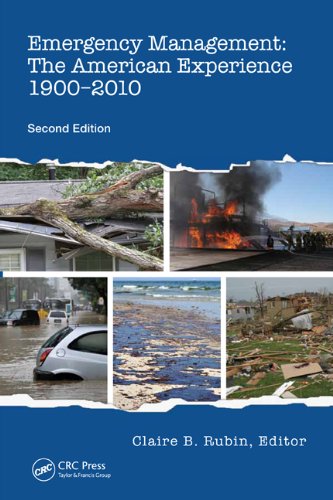
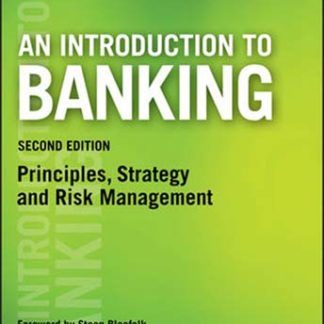
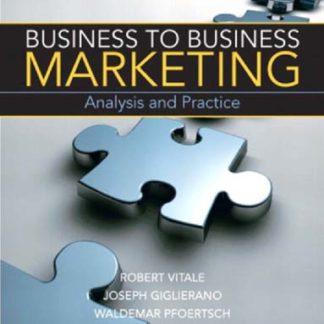
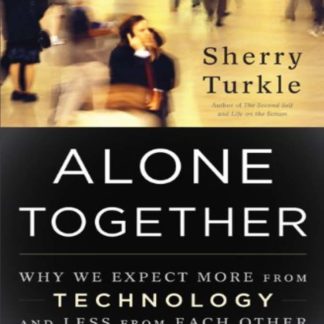
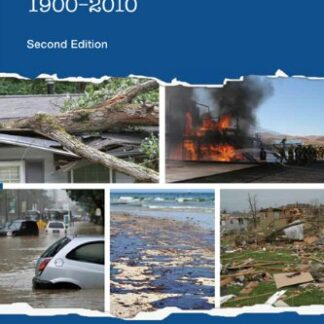
Reviews
There are no reviews yet.